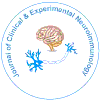The Role of Microglial Activation in Neurodegenerative Diseases: Perspectives
Received Date: Nov 01, 2024 / Published Date: Nov 30, 2024
Abstract
Microglial activation is a central feature of many neurodegenerative diseases, including Alzheimer's disease, Parkinson's disease, and multiple sclerosis. Microglia are the resident immune cells of the central nervous system (CNS) and play crucial roles in maintaining homeostasis, responding to injury, and participating in neuroinflammatory processes. However, prolonged or excessive activation of microglia can lead to neurodegeneration, contributing to the progression of various neurological disorders. This article reviews the role of microglial activation in neurodegenerative diseases, focusing on its dual functions in both protecting and damaging neural tissue. The activation of microglia is shown to involve a complex interplay of signaling pathways that result in either neuroprotective or neurotoxic outcomes, depending on the context of the disease and the surrounding microenvironment. Current research highlights the potential for targeting microglial activation as a therapeutic strategy to modulate inflammation and slow disease progression. The review also discusses the challenges and opportunities in developing such therapies, emphasizing the need for more precise and effective treatments.
Citation: John D (2024) The Role of Microglial Activation in Neurodegenerative Diseases: Perspectives. J Clin Exp Neuroimmunol, 9: 274. Doi: 10.4172/jceni.1000274
Copyright: © 2024 John D. This is an open-access article distributed under the terms of the Creative Commons Attribution License, which permits unrestricted use, distribution, and reproduction in any medium, provided the original author and source are credited.
Share This Article
Recommended Journals
Open Access Journals
Article Tools
Article Usage
- Total views: 1037
- [From(publication date): 0-0 - Apr 19, 2025]
- Breakdown by view type
- HTML page views: 839
- PDF downloads: 198
